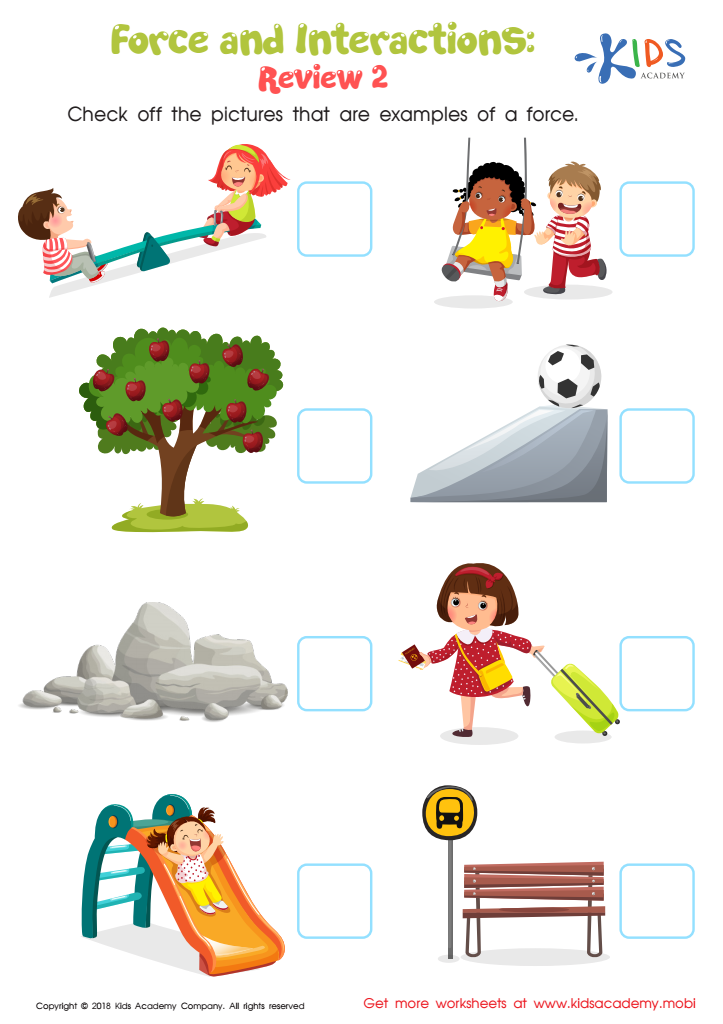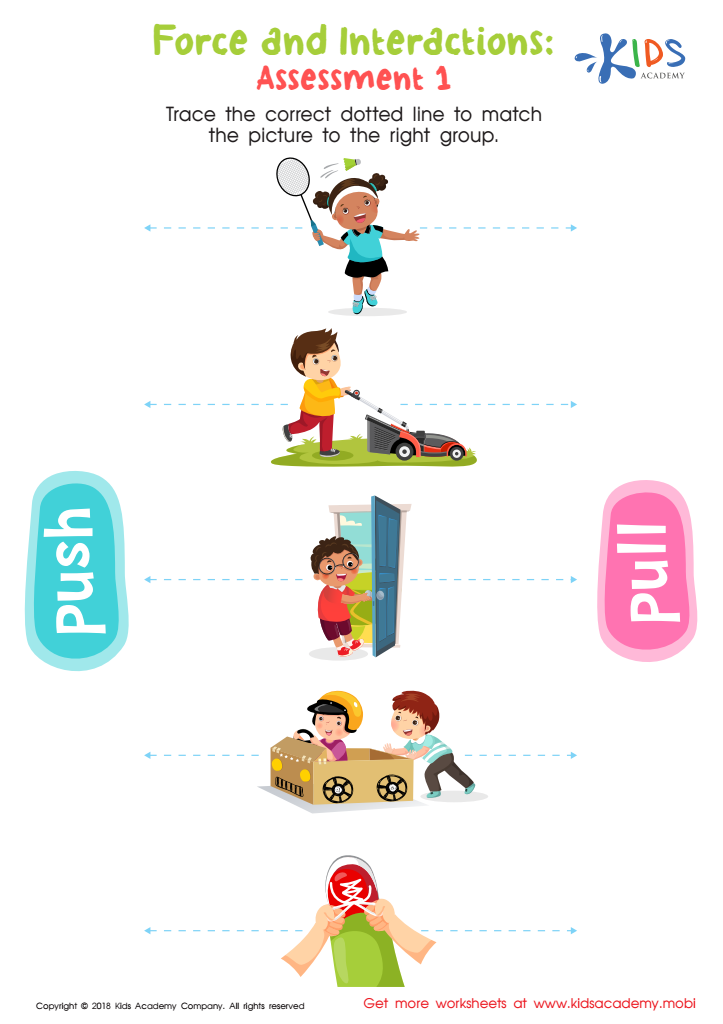Shape Recognition Physical Science Worksheets for Ages 6-9
3 filtered results
-
From - To
Discover our engaging Shape Recognition Physical Science Worksheets designed specifically for children ages 6-9. These printable resources promote hands-on learning, allowing young learners to identify and understand various shapes while developing essential scientific skills. Each worksheet incorporates fun visuals and interactive activities, enhancing cognitive growth and creativity. Children will explore shapes in different contexts, making connections to the physical world around them. Perfect for classroom use or at-home learning, these worksheets encourage independent exploration and foster a love for science. Help your child build confidence and curiosity in their scientific journey today with our expertly crafted worksheets!


Force and Interactions: Review 2 Worksheet


Will It Make a Shadow? Worksheet


Force and Interactions: Assessment 2 Worksheet
Shape recognition is a fundamental aspect of early childhood education, particularly in the context of physical science for children aged 6-9. Understanding shapes lays the groundwork for more complex concepts in mathematics, geometry, and spatial reasoning. When children identify, compare, and categorize shapes, they develop critical thinking skills and improve their problem-solving abilities. This knowledge is not just an abstract concept; it’s essential for many real-world applications, from organizing items to understanding architecture and engineering in daily life.
Teachers and parents play a crucial role in supporting shape recognition through engaging activities, such as sorting games, puzzles, and art projects. By incorporating physical science lessons that relate to shapes, such as exploring the properties of different objects and their functions, educators foster curiosity about the world. This exploration sparks a love for learning that can extend beyond the classroom.
Moreover, shape recognition contributes to fine motor skills as children manipulate various objects, providing a hands-on learning experience. Engaging young learners in shape-related activities can enhance their social skills through collaboration and interaction. Ultimately, prioritizing shape recognition in early education creates a foundation for future academic success and prepares children to navigate a visually rich world.
 Assign to My Students
Assign to My Students




















